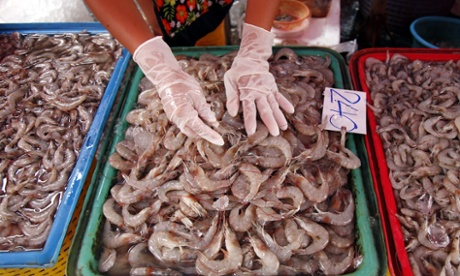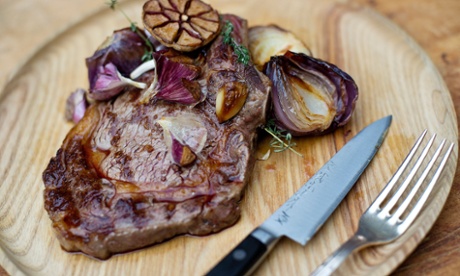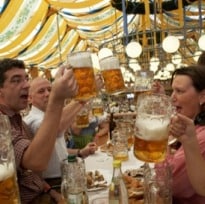It's not just Olive Garden. Many restaurants save costs with a little sleight of hand
Olive Garden's unsalted pasta water is just the beginning of the chamber of horrors that is the modern restaurant's kitchen.
To save a few pennies, restaurants are doing things that would never appear on the menu: pouring thin heads on beer, serving lightly embalmed shrimp and selling a $2.50 bottle of wine for $15 to consumers who never wonder about the quality.
Activist investor Starboard Value exposed a stark reality of the restaurant business this year, and none of us will ever recapture our innocence. Starboard accused Darden Restaurants, the parent company of Olive Garden, of not salting their pasta when cooking it to make their pots last longer.
Other restaurants do similar things, although they may not find themselves in a research report. Running a successful restaurant isn't even about nickels and dimes; it is all about the pennies, several restaurants consultants told the Guardian. Margins are slim, costs are high and you don't have to be an expert to know that many eateries don't survive past their first or second year.
Successful restaurants are always looking for creative ways to protect the bottom line without giving the impression that quality is going down with it.
They do it in many different ways, most subtle - like putting fewer expensive items like berries and nuts on a salad, as David Kincheloe, president of National Restaurant Consultants told me.
Sometimes it gets a bit darker. Ten years ago, shrimp replaced tuna as the most frequently eaten US seafood. Asian shrimp farming really took off, flooding the US market with cheap farm-raised shrimp, which, absent of provenance, showed up as a fancy dish on many menus. To keep the mass-produced shrimp clean, it is treated with a diluted form of formaldehyde, called formalin, which the FDA allows. That allows us to eat more - and overpay for - dubious shrimp.

The easiest ruse at a restaurant is to just rename some ugly-sounding ingredient.
Take the example of the Patagonian toothfish. No one wants to eat something called a toothfish, says Aaron Allen of Aaron Allen & Associates, a restaurant consulting firm. But Chilean sea bass, the alternative name for the dentally overachieving giant, sounds like an exotic adventure and has long shown up on wedding menus across the US. "Kobe beef" is only served at two restaurants in the US, despite the phalanx of menus that claim the deliciously fatty beef for their own.
About those menus: that lineup of dishes is no accident.
A restaurant can get a $1,000 per month net profit increase just by changing menu positions of dishes, says Allen. Studies using eye trackers have found that the middle of a single-page menu is where most people's eyes go to when making a purchasing decision, says Kincheloe. Doing nothing except putting the items that drive good margins in the middle of the menu can boost revenue, he says.
Then there are the utensils. Studies have shown that patrons will grade the same steak as higher quality if they use heavier silverware to eat it, says Allen.

After the menu has been wordsmithed and the forks properly calibrated, alcohol can be a good place for restaurants to make up any losses on food.
But with ever savvier patrons looking at a menu and wondering why they should pay ten times the price for their bottle of Sauvignon Blanc when they can get it for so little at the local wine store, restaurants have learned to be creative, says Linda J Lipsky, president of Linda Lipsky Restaurant Consultants.
Instead of stocking the same brands of wine available in liquor stores, restaurants can place something called an SLO, or special liquor order, for wines not found in US stores. A restaurant Lipsky was working with found a Santana Tempranillo wine that retailed at $2.50 a bottle. The restaurant sold it at $15 a bottle and everyone seemed to enjoy it, never knowing they were paying 6 times the price.
Beer is another area that allows a little creativity to save a cent or two. That pretty one-inch head of foam on a beer adds up to a lot of beer saved, says Lipsky. The difference between a half-inch of foam on a beer and a full inch can be about 20 beers per keg saved, says Lipsky.
Restaurants and bars are willing to spend more on dish-washing to get those kinds of savings. To get that perfect foam each time, you need a clean glass, explains Lipsky. The digestive enzymes in our saliva prevent the foam from forming, so it makes more sense for bars to give you a clean glass every time with an inch of foam, rather than refill your glass, says Lipsky.
But sometimes after all that, there are costs beyond your control, like this year's rise in beef prices. Then restaurants can resort to some really sneaky tricks. For example, portions can be decreased without most people noticing, as long as it is done gradually, says Lipsky.
A restaurant can shave an ounce off a burger patty and simply use a four-inch bun in place of a five-inch bun so no one wonders where that ounce of meat went, says Kincheloe. The same goes for plates: when food prices rise, restaurants can switch from 12-inch plates to 11-inch plates without anyone noticing, says Lipsky.
It is not just the plate size that can be part of the illusion of getting more for your money. Allen's grandfather and father ran a restaurant for years that would open at 4pm for dinner, way too early even for the senior special crowd.
To give the impression that the early dinner was in high demand and drive traffic, they would instruct the staff to park in front of the restaurant so people going by would see a full lot and want to check out what all the fuss was about at 4pm. As the restaurant filled up, the staff would sneak out one by one and move their cars to the back of the restaurant, Allen tells me.
With all the ways restaurants find to cut a little here and there, it may seem like a lucrative business if you get it just right.
But after all that work to cut a little cost here and there, to rethink every menu item and its profits, to find the perfect way to describe a chicken cutlet to make it sound exciting, the business is still a pretty low-margin affair. Profit margins for most places are around 10% to 12%, according to Kincheloe.
You have to really love it to work in the industry, he says.
At Oktoberfest in Munich, the beer is foamy. But at many restaurants, a thin layer of foam saves money. Photograph: Alamy





